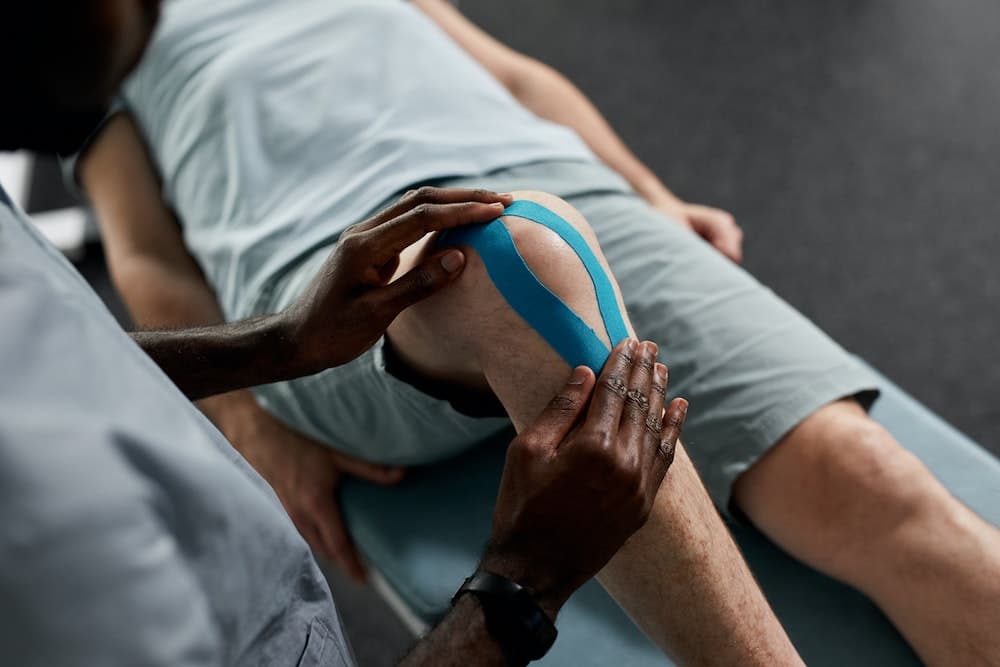Modern sports medicine has evolved significantly over the year, leveraging innovative methods and technologies to aid in the rehabilitation of athletes. One such recent development is underwater treadmill training, a type of aquatic therapy that has gained popularity among sports professionals and therapists alike.
This therapy, which involves water-based exercise on an immersed treadmill, has shown remarkable efficacy in enhancing the recovery process, especially for athletes recovering from injuries or surgery. In this article, we will explore how underwater treadmill training can serve as a valuable tool in the rehabilitation of professional basketball players.
Cela peut vous intéresser : What Are the Psychological Strategies to Help Baseball Players Overcome Slumps in Batting?
The Science Behind Aquatic Therapy
Before we delve deeper into the specifics, let’s first understand the science behind aquatic therapy. This involves the use of water and specific activity-based therapies to improve function, promote relaxation, increase circulation, and improve strength and endurance.
Athletes, particularly those involved in high-impact sports like basketball, often suffer from injuries affecting their joints and muscles. In traditional land-based rehabilitation programs, these injuries can be challenging to manage due to the effects of gravity and the consequential strain on these areas.
A voir aussi : What Are the Best Practices for Monitoring Heart Rate Variability in Elite Rowers?
Aquatic therapy addresses this by leveraging the buoyancy of water to reduce strain and provide a safe environment for athletes to engage in controlled, therapeutic exercises. The resistance of water also helps to build strength without the need for heavy weights.
Underwater Treadmill Training: An Overview
Underwater treadmill training is a specific type of aquatic therapy that incorporates the benefits of water with the familiar, functional movement of running or walking. Using an underwater treadmill, athletes can mimic their regular running mechanics in a reduced-impact environment.
The advantage here is that the water’s buoyancy significantly decreases the weight load on the athlete’s body, thus reducing the impact on their joints. This is particularly beneficial for basketball players, who frequently suffer from injuries relating to the knees and ankles.
Running underwater on a treadmill also increases the resistance, which in turn helps to improve cardiovascular fitness, muscle strength, and overall endurance, all crucial aspects for any professional athlete.
Scholarly Evidence: Google Scholar and PubMed Studies
Google Scholar and PubMed, two of the most respected academic search engines, feature several studies highlighting the benefits of underwater treadmill training for athletes.
For example, a study published on PubMed focused on the effectiveness of underwater treadmill training in improving balance and strength in athletes recovering from anterior cruciate ligament (ACL) surgery. The research found that athletes who participated in underwater treadmill therapy showed significant improvement in balance and strength compared to the control group.
Similarly, a study found on Google Scholar demonstrated that underwater treadmill training could effectively increase the range of motion in the knee joint and significantly reduce pain. This reduction in pain, coupled with an increased range of motion, can greatly speed up the recovery process, allowing athletes to return to their regular training regimen more swiftly.
How Professional Basketball Players Can Benefit
Underwater treadmill training can offer several specific benefits for professional basketball players.
Firstly, it enables early mobilization after an injury or surgery. The water’s buoyancy allows athletes to start their rehabilitation process sooner than traditional land-based therapy, aiding in a quicker recovery.
Secondly, it helps to maintain cardiovascular fitness during the recovery phase. Since running underwater provides a cardiovascular workout, basketball players can keep their fitness levels from dropping significantly during the rehabilitation period.
Finally, it provides a psychological boost. Being able to train and work out, even while injured, can significantly impact an athlete’s mental well-being and motivation levels.
In conclusion, there’s ample evidence to suggest that underwater treadmill training can be a significant addition to the rehabilitation process for professional basketball players. Offering a host of benefits, from reducing pain and improving strength to aiding early mobilization and boosting psychological health, this innovative approach is well worth considering in the realm of sports medicine.
Incorporating Underwater Treadmill Training into a Rehabilitation Regime
In order to incorporate underwater treadmill training into a player’s rehabilitation program, sports medicine practitioners need to develop an integrated approach. The unique nature of this anti-gravity therapy can be utilized in various stages of rehabilitation, making it a versatile tool in a professional athlete’s recovery.
At the initial stages following an injury or surgery, the buoyant properties of water immersion can be utilized. This allows for early mobilization, facilitating weight-bearing exercises without causing excessive strain on the joints and muscles. As the athlete progresses in their recovery, the resistance provided by the water can be used to gradually increase the intensity of the workouts, aiding in strength conditioning.
Research studies found on Google Scholar and PubMed further bolster the argument for the utilization of aquatic therapy in the rehabilitation process. One free article retrieved from PubMed demonstrated that participants undergoing underwater treadmill training showed significant improvement in single leg balance and plyometric training capacity compared to those who undertook traditional land-based therapy.
Moreover, athletes participating in water running exercises were able to maintain their cardiovascular fitness levels during the recovery period. This is a key aspect, particularly for basketball players, as cardiovascular endurance is a crucial component of their sport.
Lastly, incorporating deep water workouts in rehabilitation can also provide a psychological advantage. The ability to perform exercises and mimic game-like movements, even in the early stages of recovery, can contribute to an athlete’s mental well-being, aiding in their overall recovery and return to sport.
Conclusion: The Future of Rehabilitation in Professional Basketball
To conclude, underwater treadmill training presents a promising addition to the field of sports medicine, particularly for the rehabilitation of professional basketball players. The combination of weight-bearing ease, increased range of motion, and strength conditioning provided by this aquatic therapy can significantly reduce the recovery time, allowing athletes to return to their sport quicker.
The evidence provided by numerous studies available on respected academic search engines such as Google Scholar and PubMed further validates the effectiveness of underwater treadmill training. It’s not only a tool for physical recovery but also aids in maintaining cardiovascular fitness and improving the psychological aspect of injury rehabilitation.
Given the high prevalence of injuries in professional basketball, such as ACL tears and other joint-related issues, the use of underwater treadmills could become mainstream in the years ahead. As we continue to advance in the field of sports medicine, the incorporation of innovative recovery methods like underwater treadmill training will undoubtedly play an increasingly important role in the rehabilitation process.
In the end, the goal remains the same – to enable professional athletes to return to their sport safely, efficiently, and stronger than before. Through the continued exploration and implementation of aquatic therapy, we’re moving ever closer to achieving this goal.






